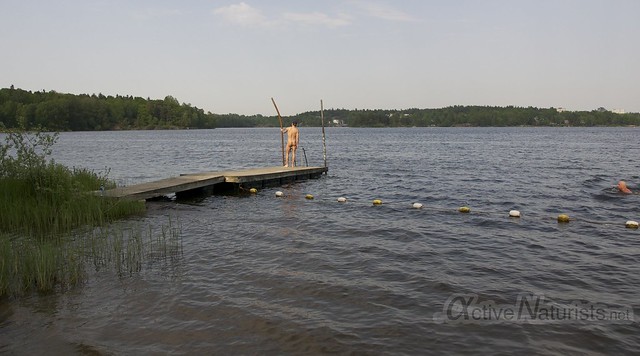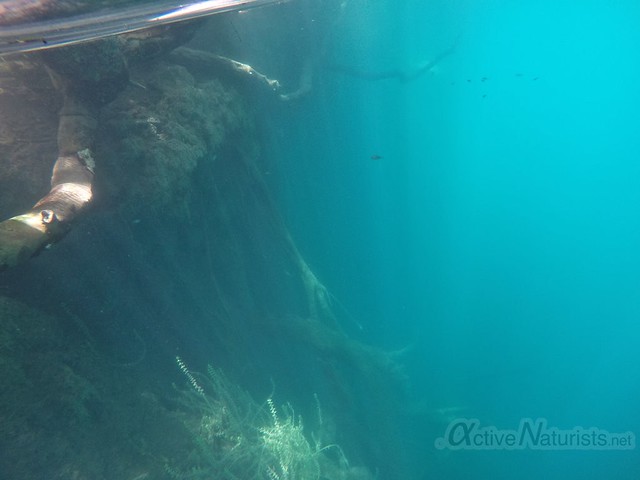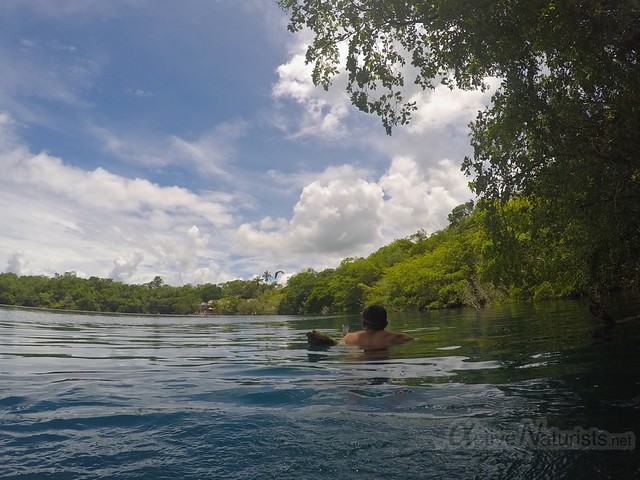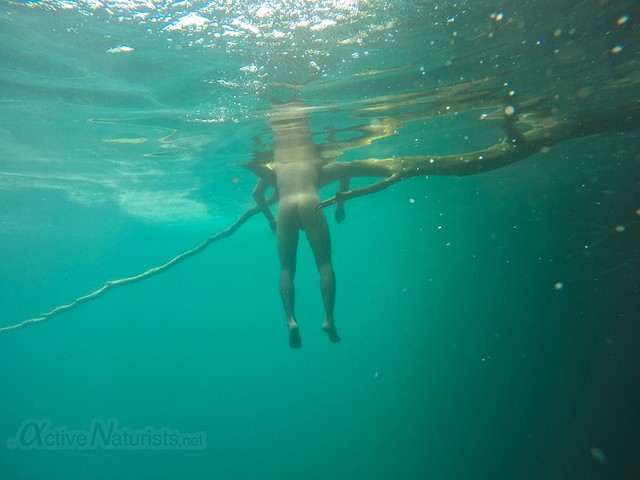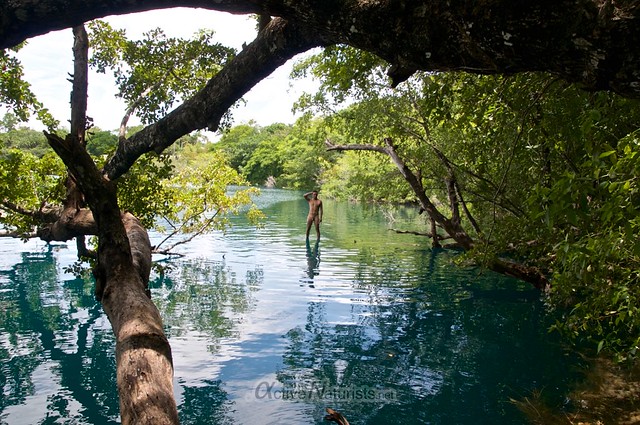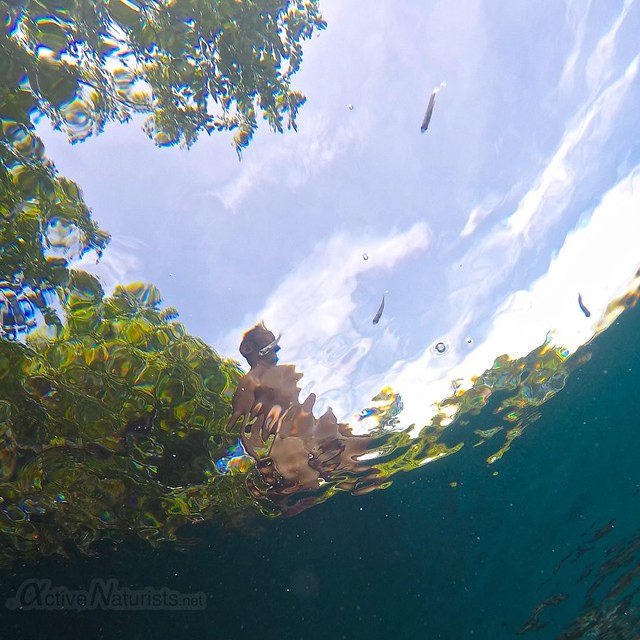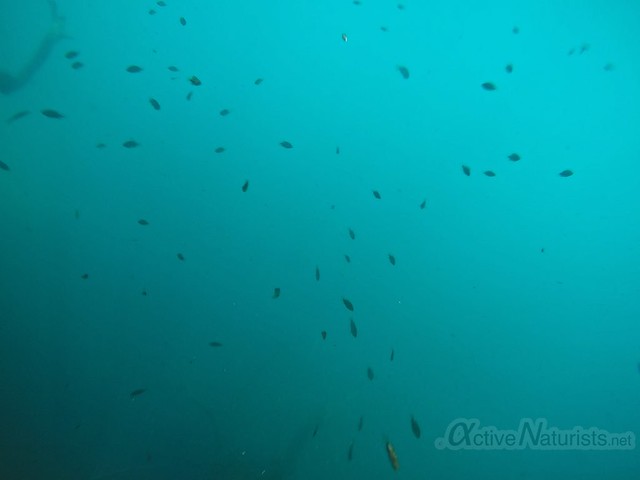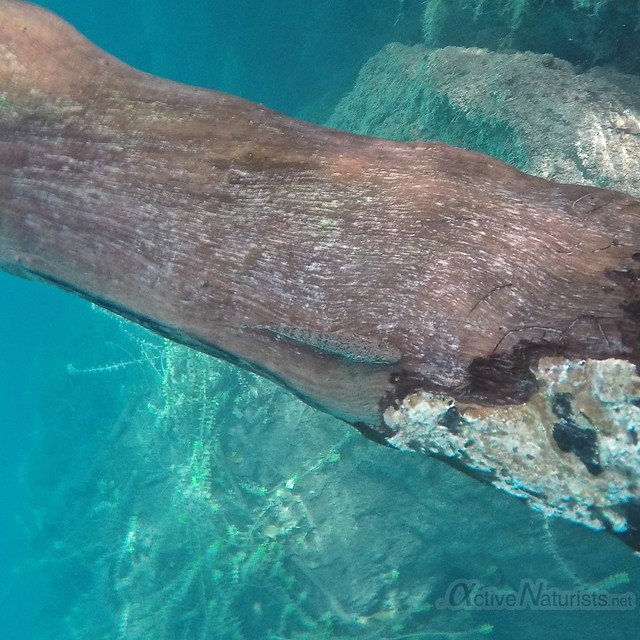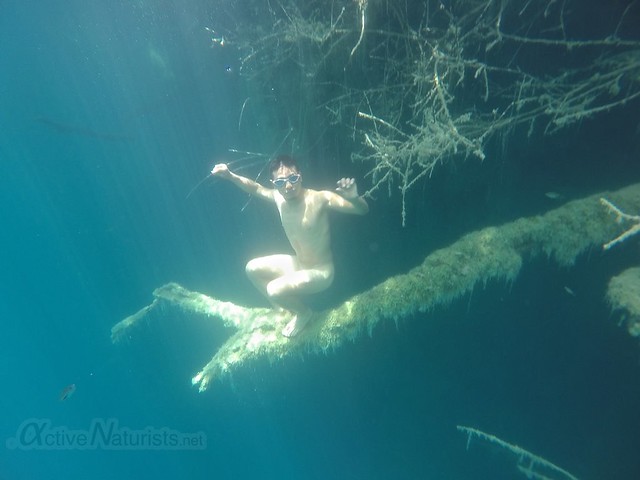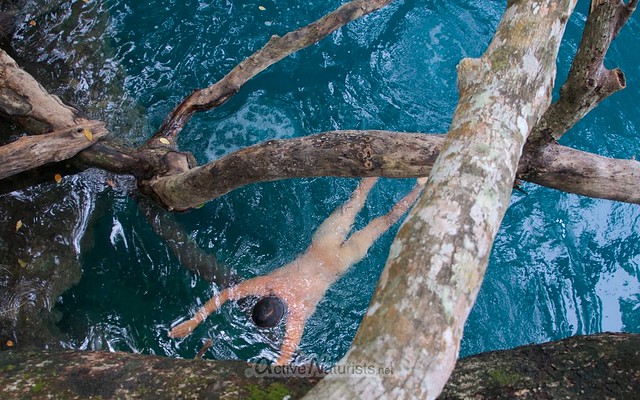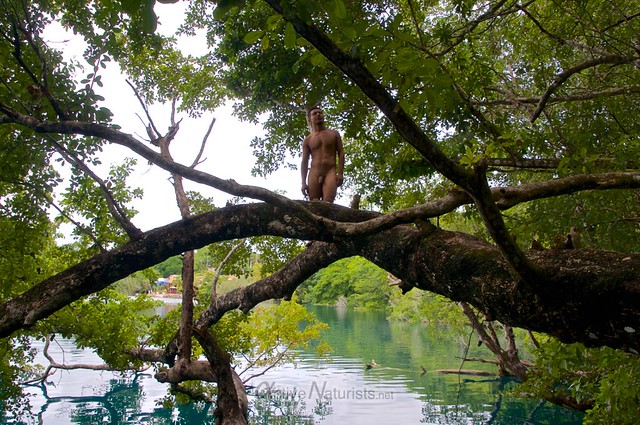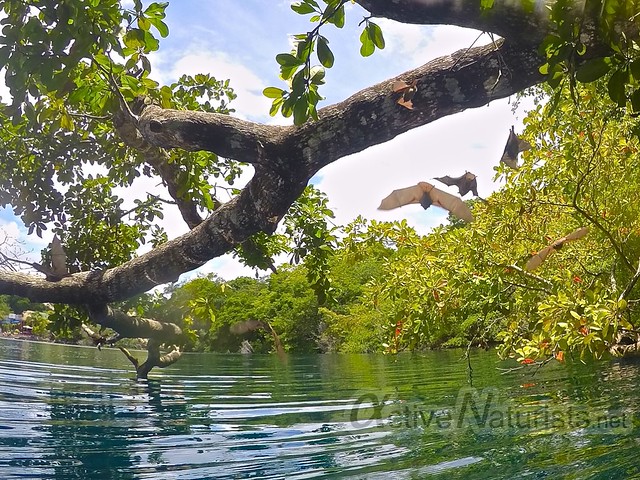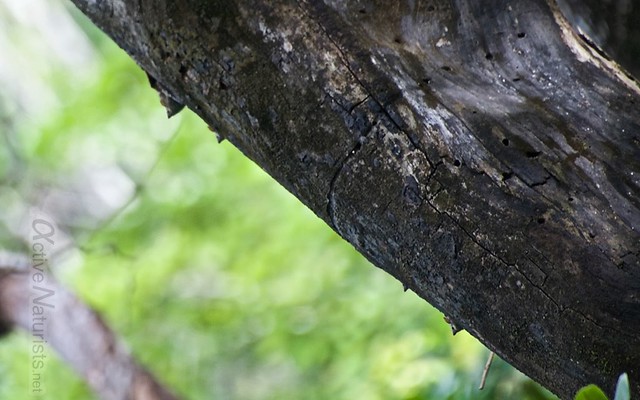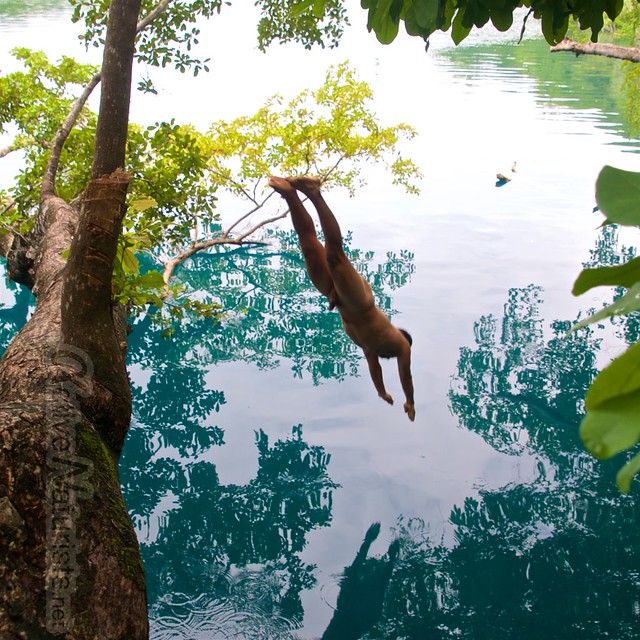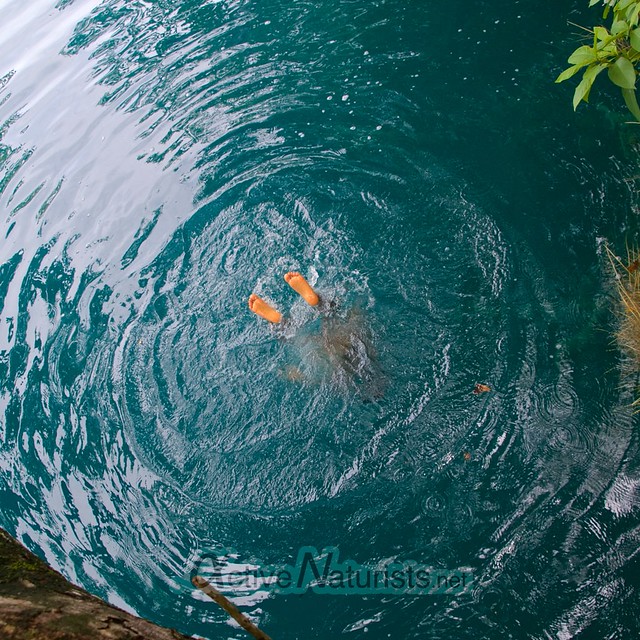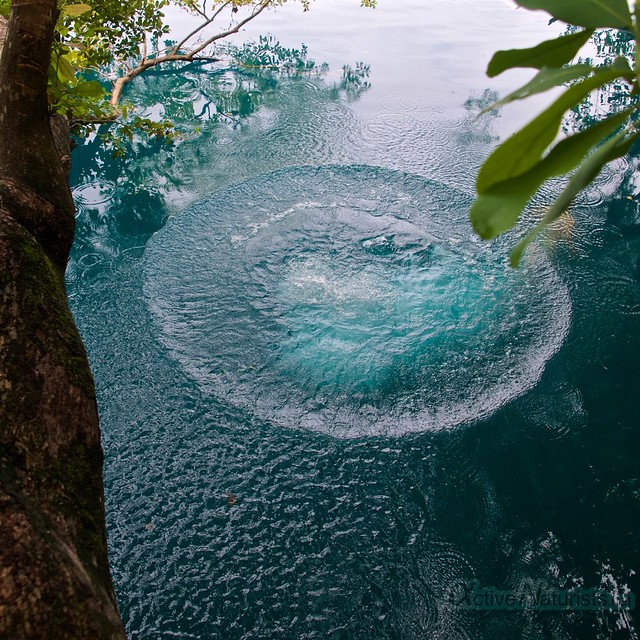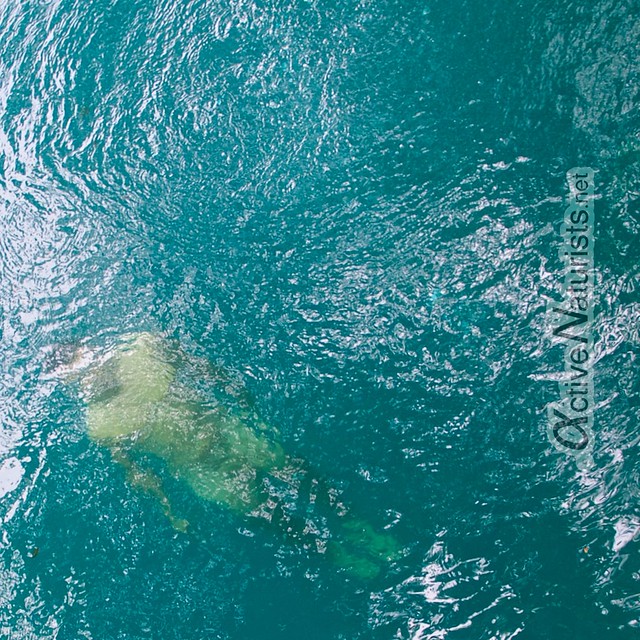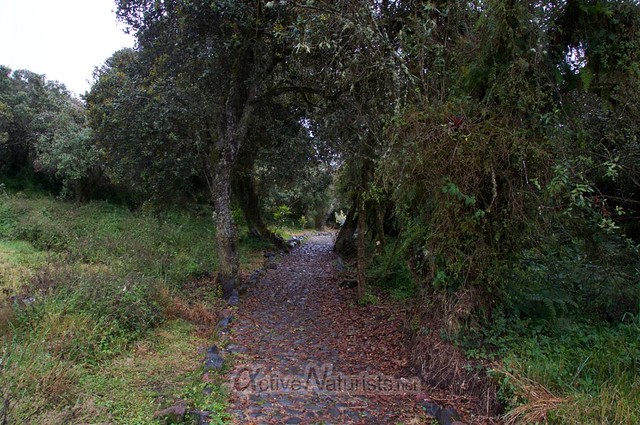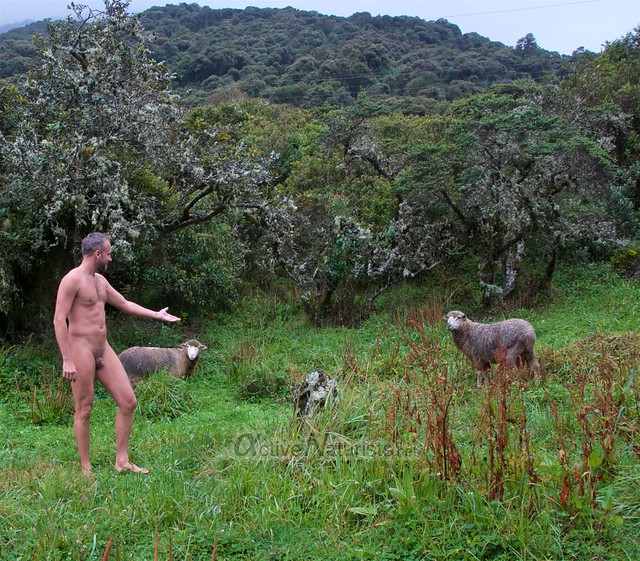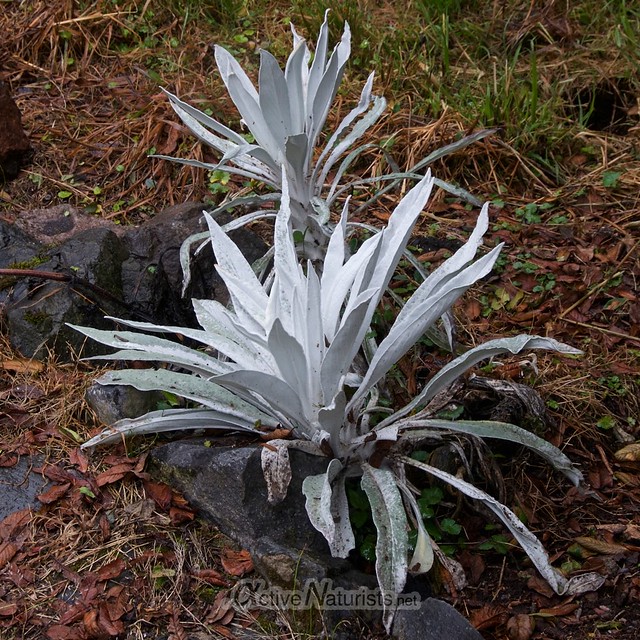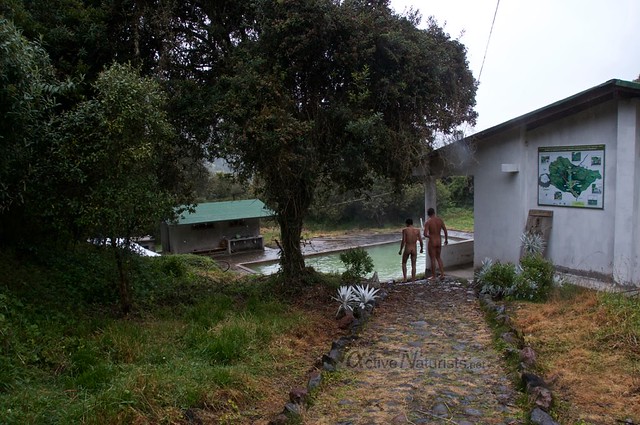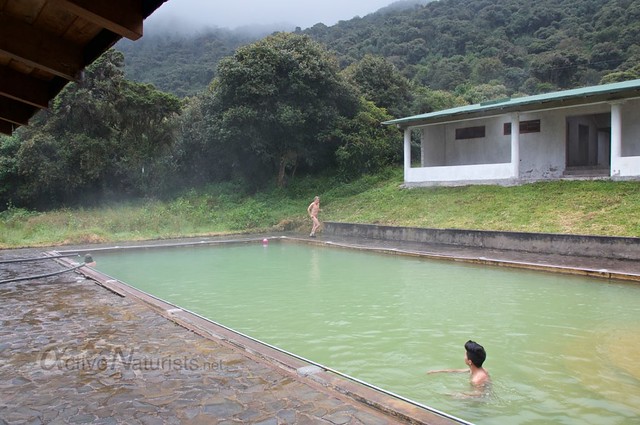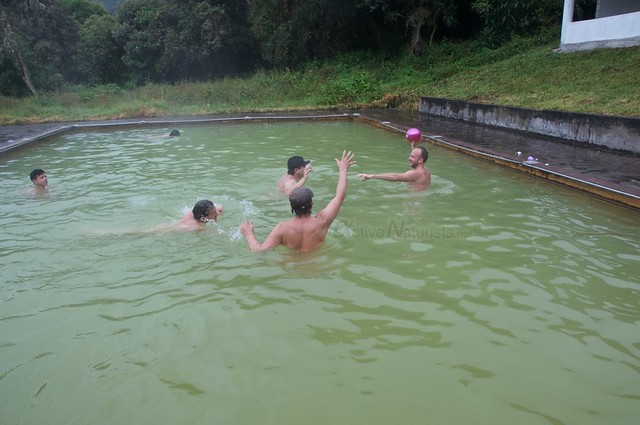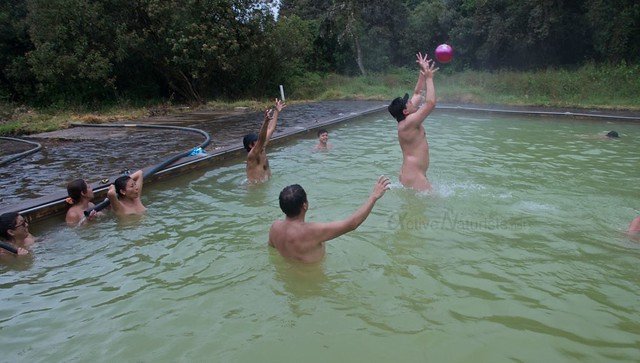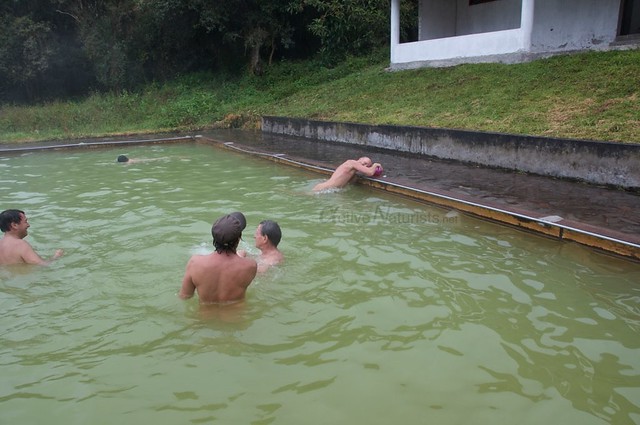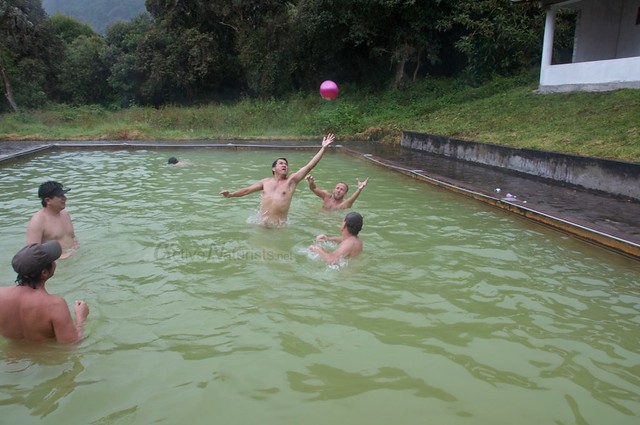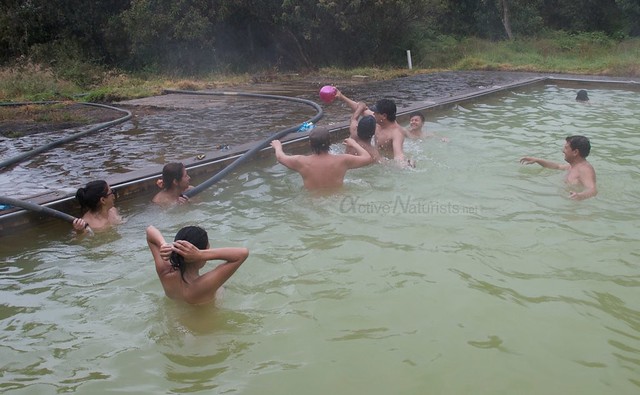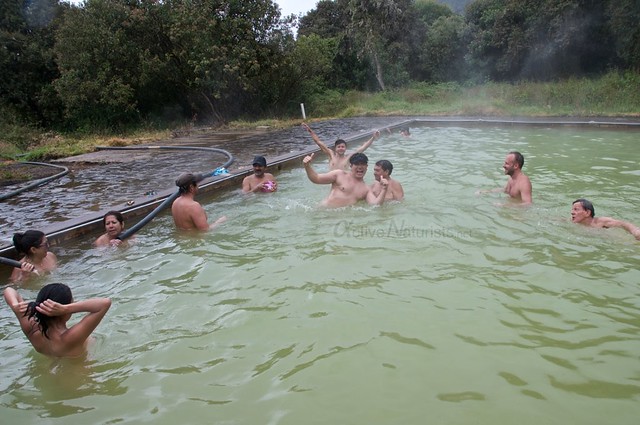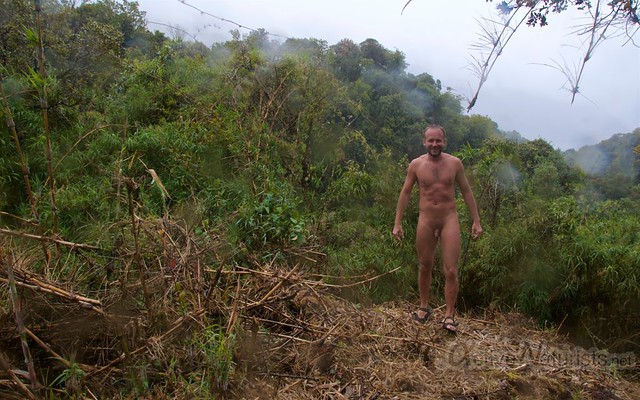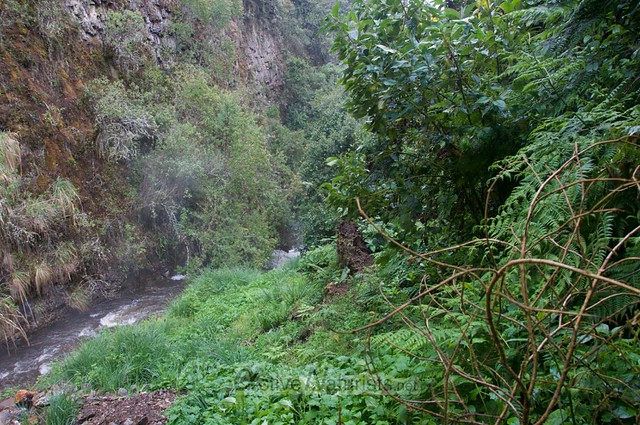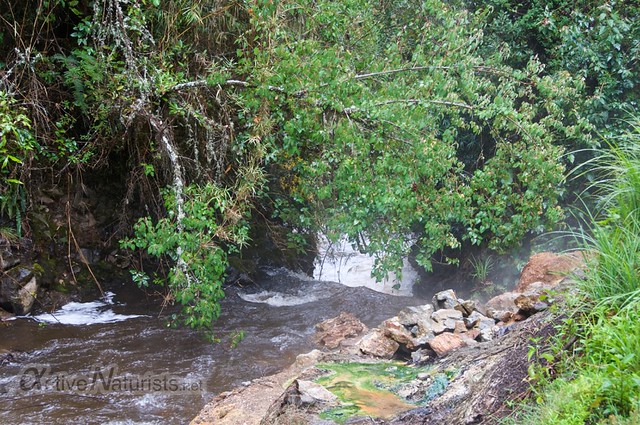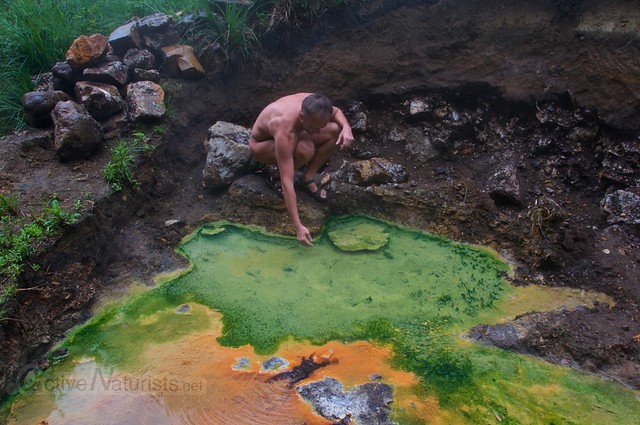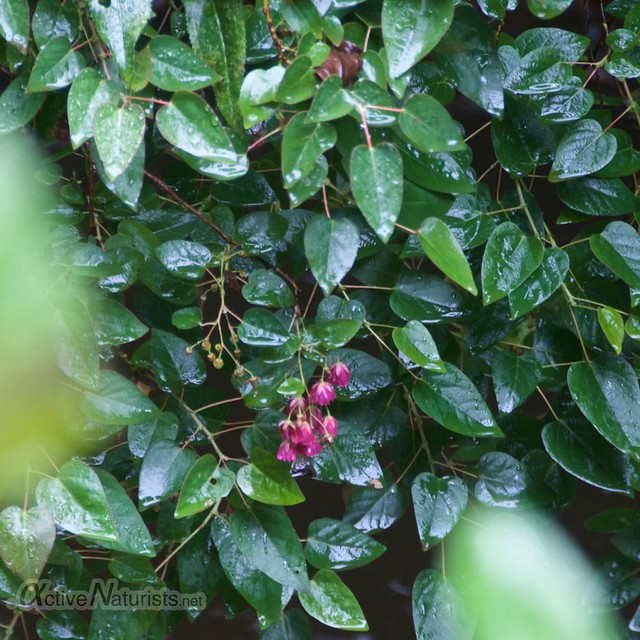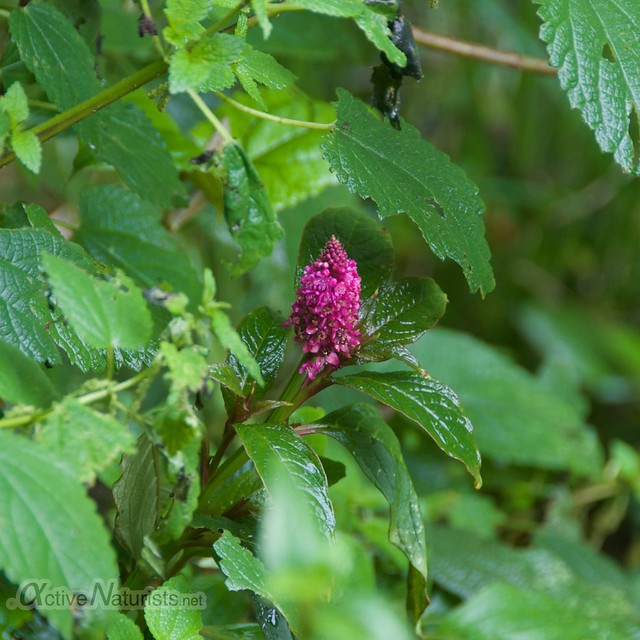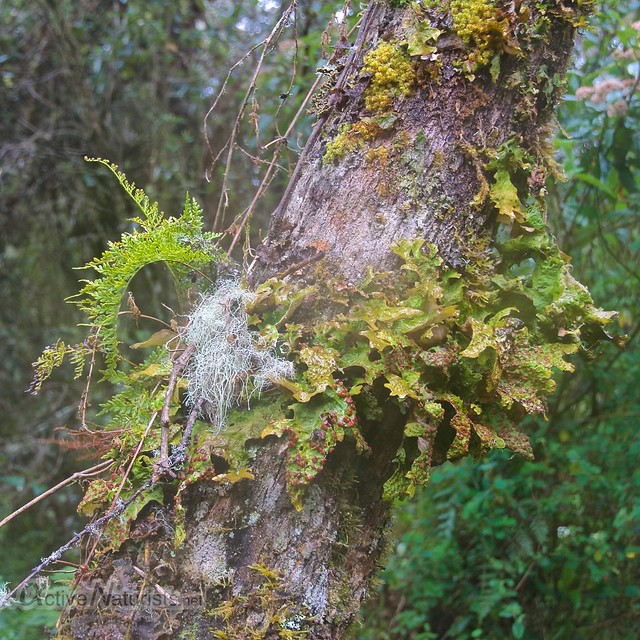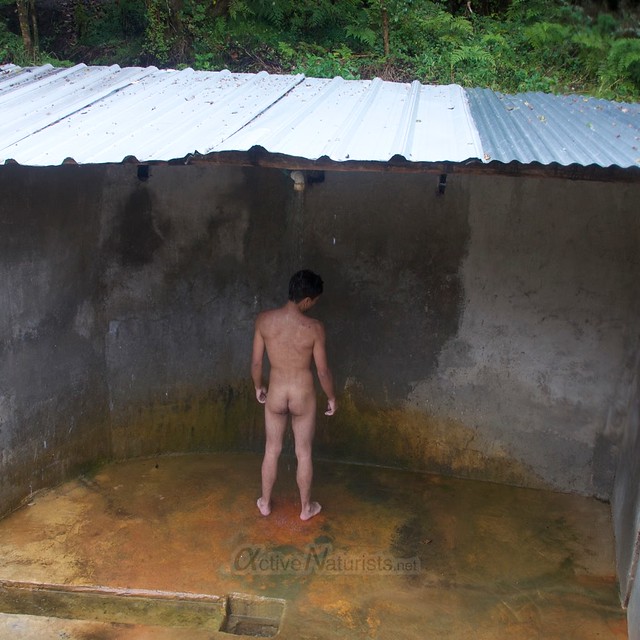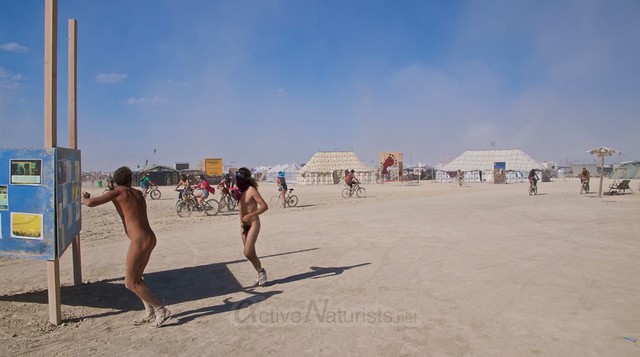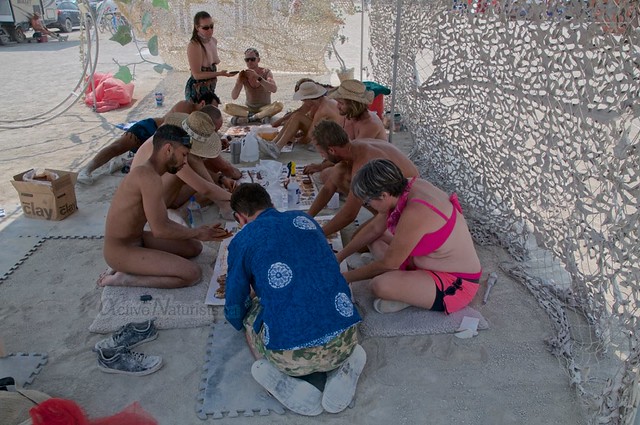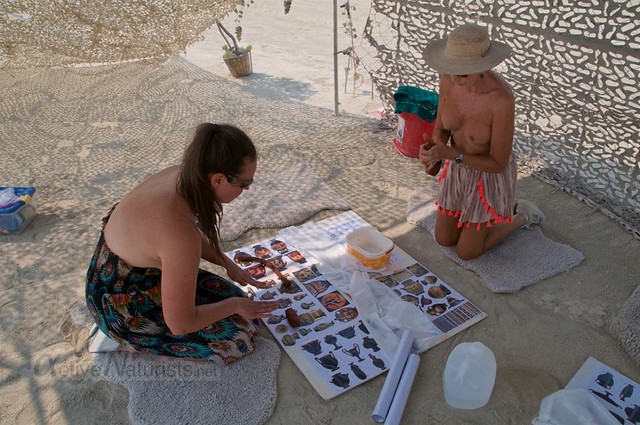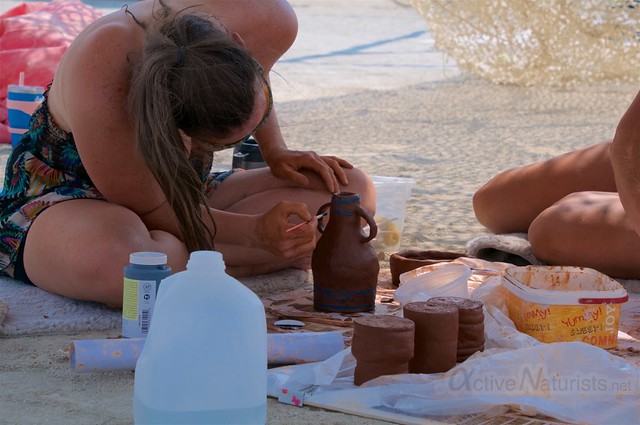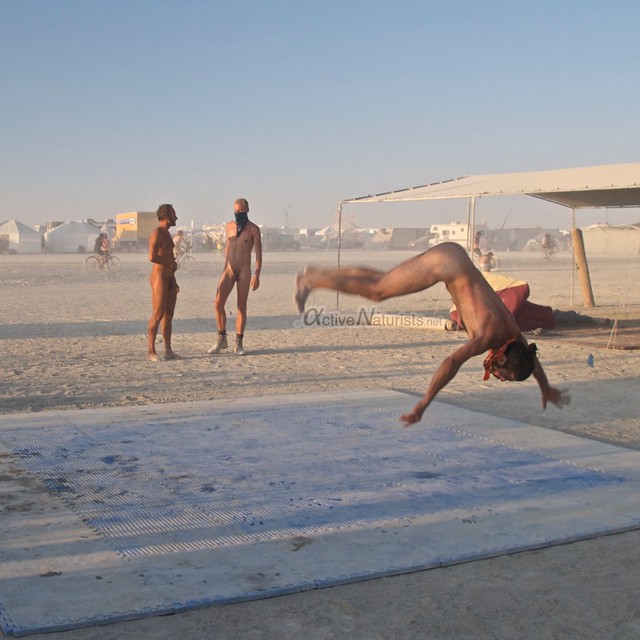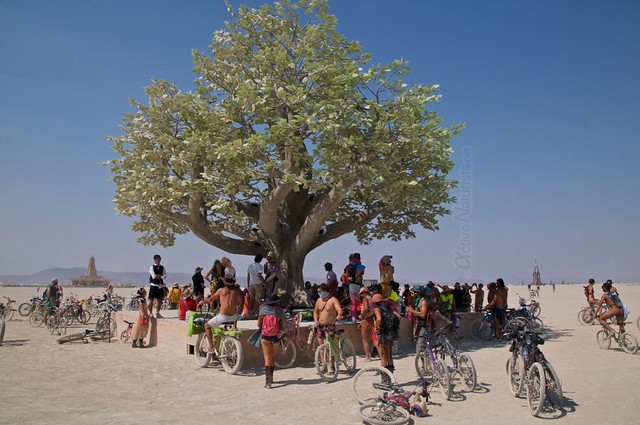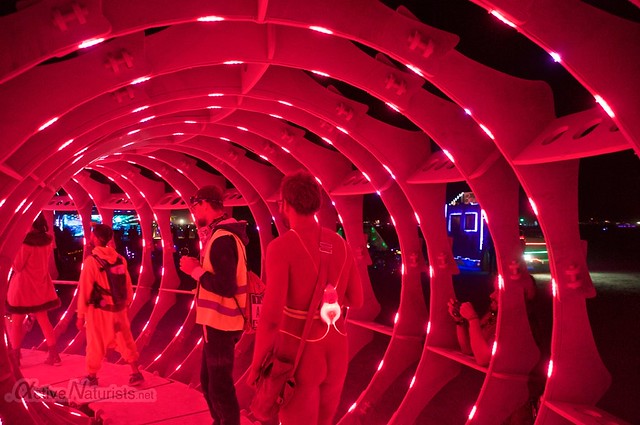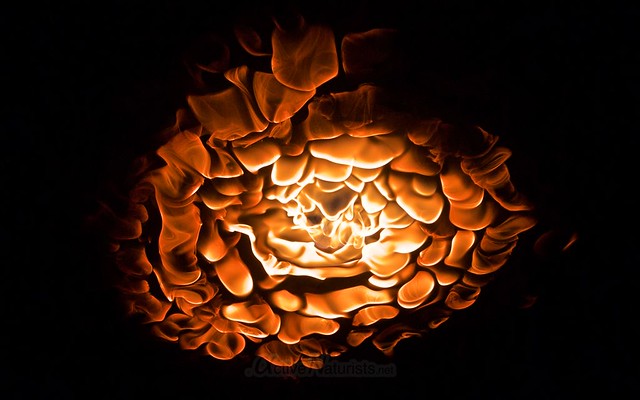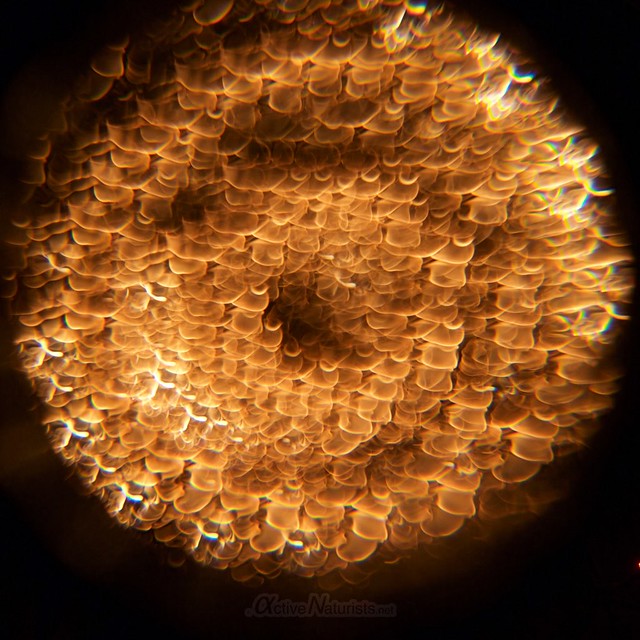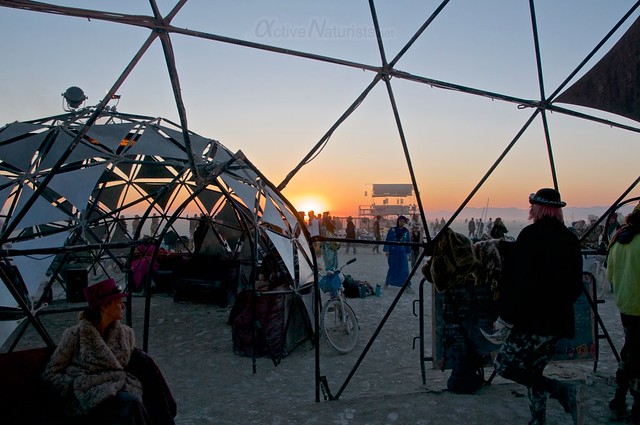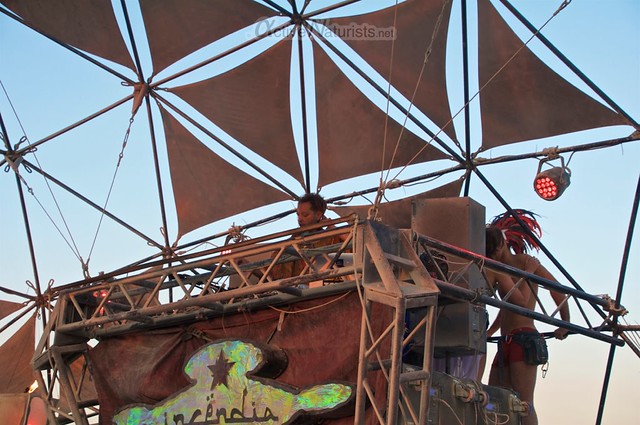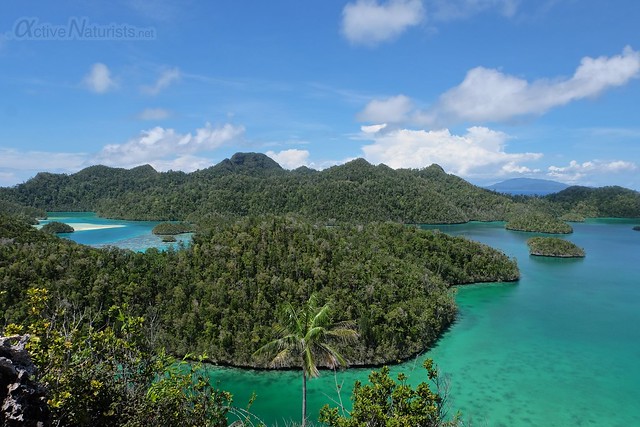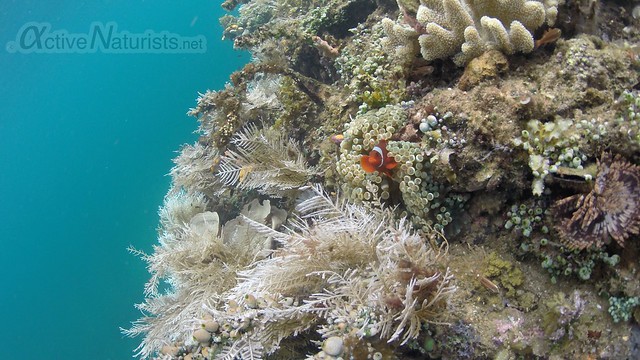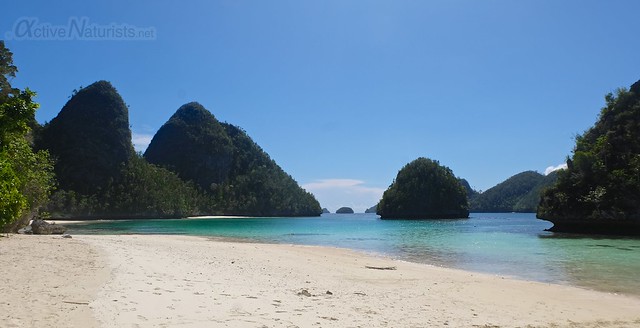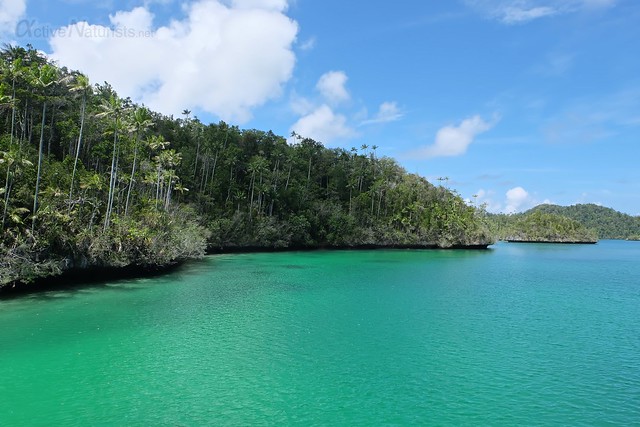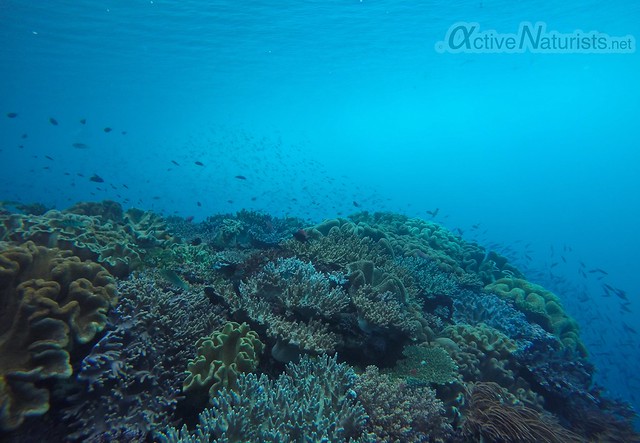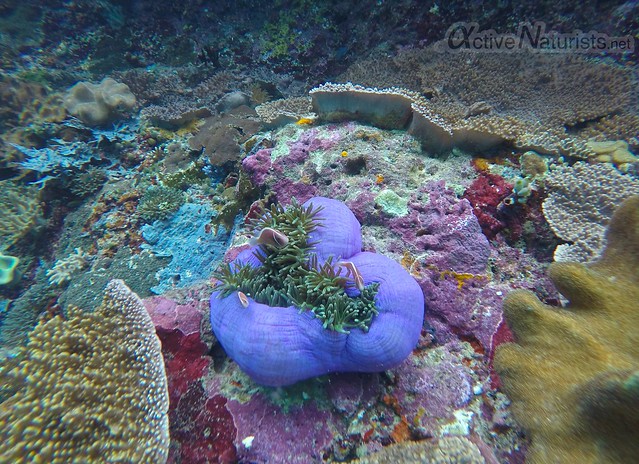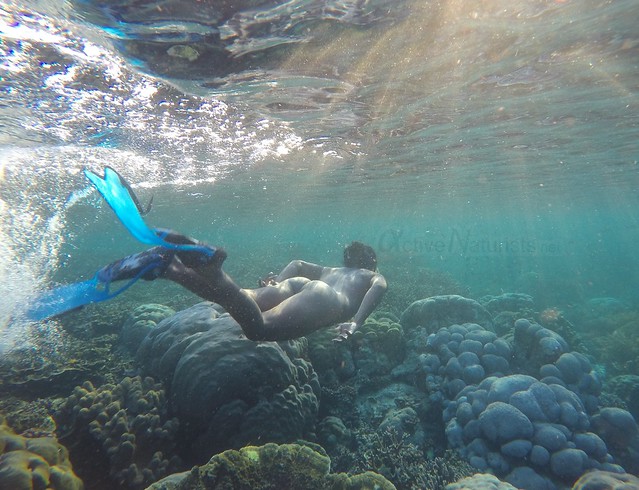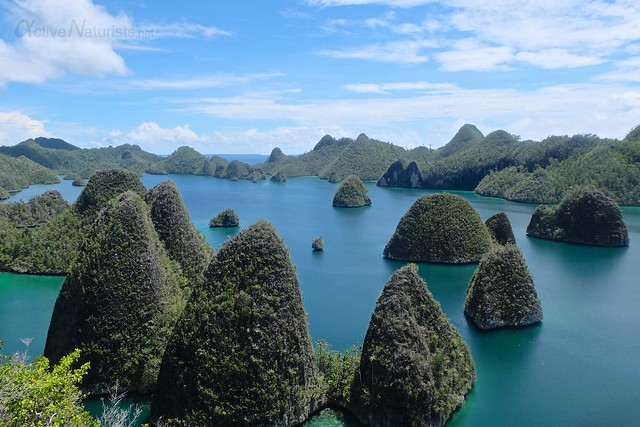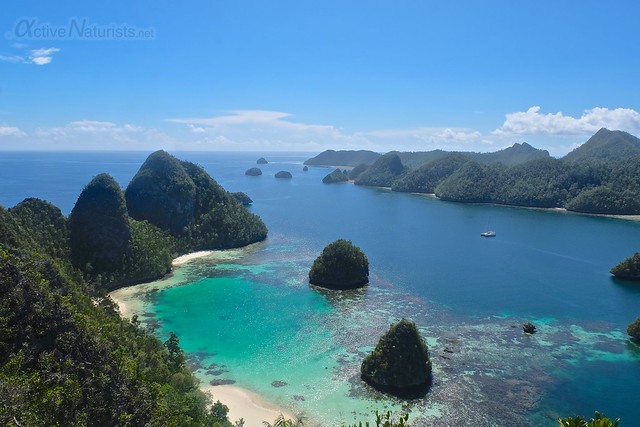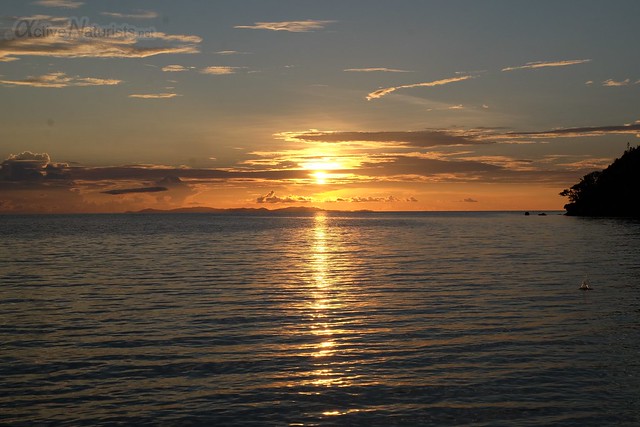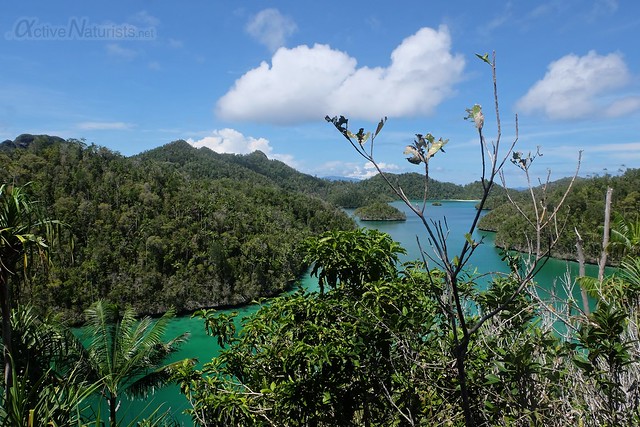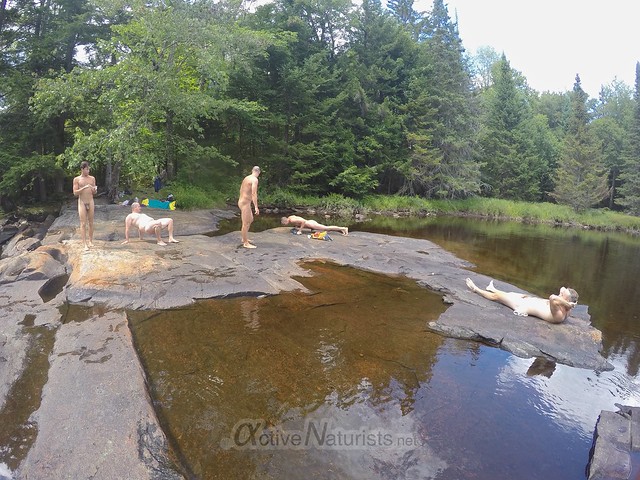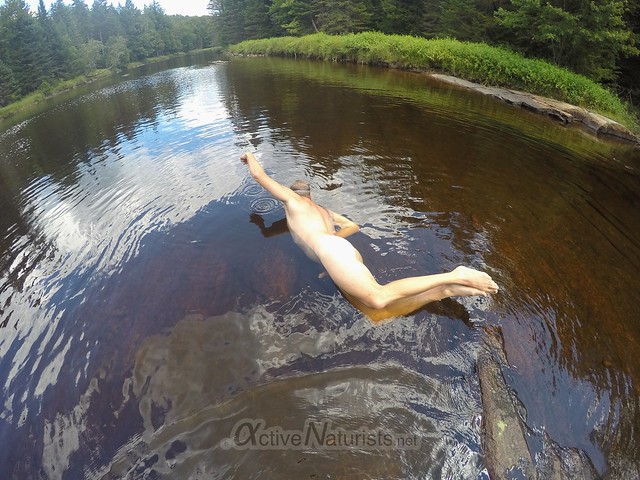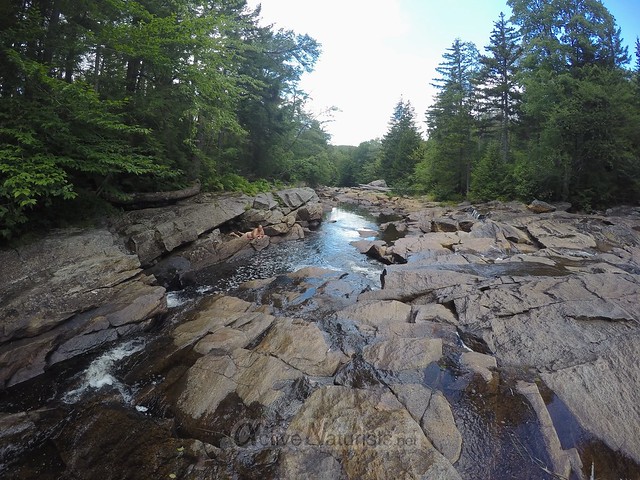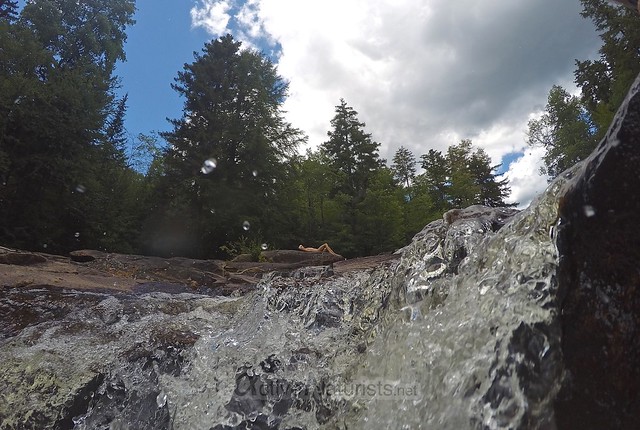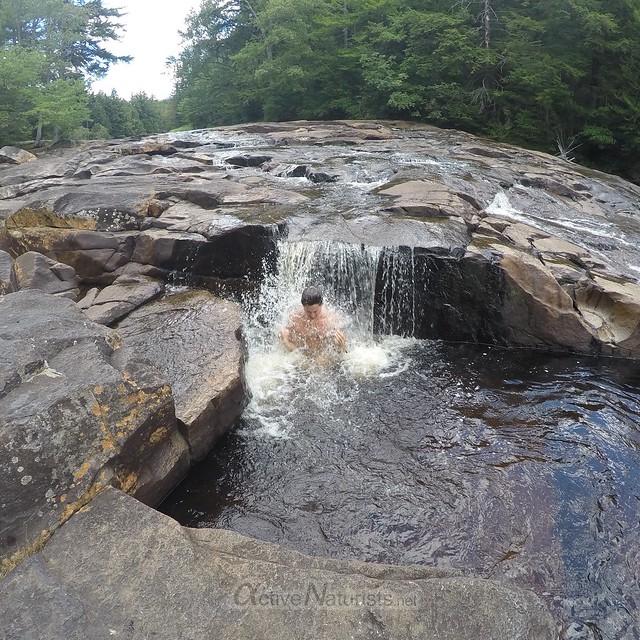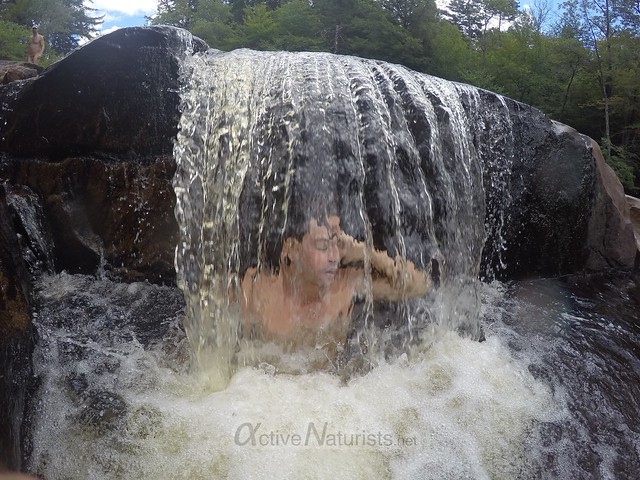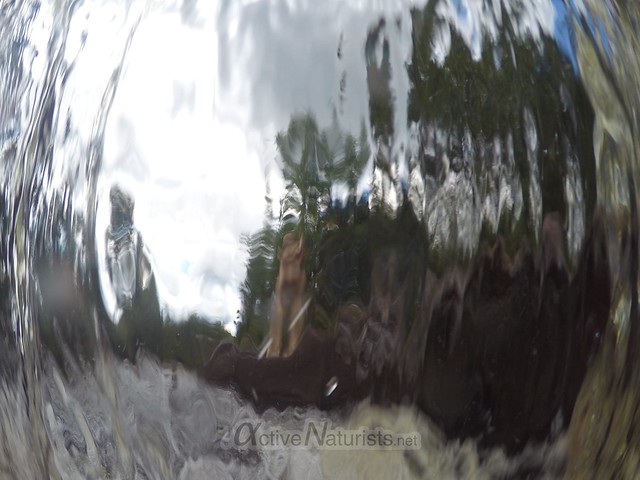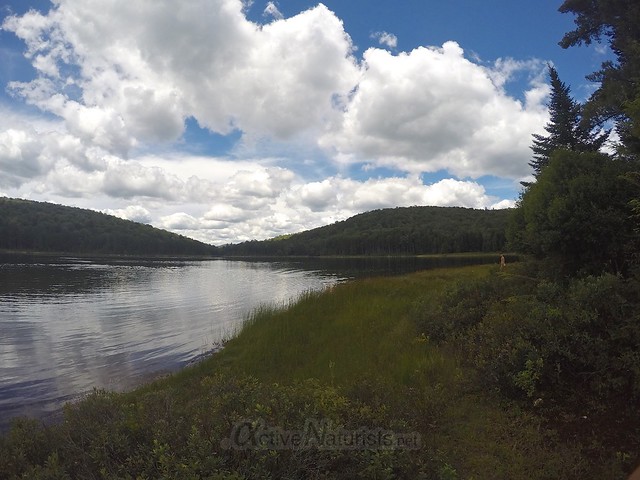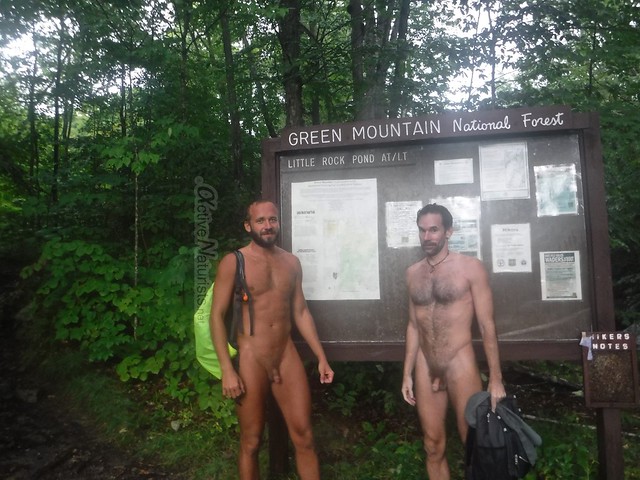
Although the US has a fame for being a prude country, there are some local exceptions, and Vermont is one of them: there is no state law against public nudity (though there is one against disrobing in public :D) And with all those green mountains around (just think of the state’s name etymology), it’s a perfect destination for naturists!
My long-time pen pal Ed organizes an annual summer solstice naked hike in Vermont, and though I could never make it for this group hike itself, I went on the same route with Ed and another friend, Matt, just later in summer (mid-August).

The route includes a part of the famous Appalachian trail, so you’d expect a few fellow hikers, but it’s great to have the law on your side – just make sure to leave your car naked, and you don’t need to hide!-)
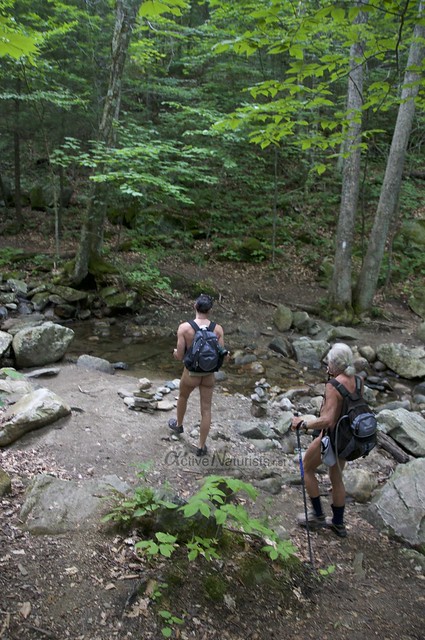
Shortly after the trailhead, we got to a small waterfall

– nice to start the hike on a fresh note!
Make sure to take advantage of this skinny-dipping spot, because after that the trail gets very steep.

The forest is dominated by fir trees – young and old,
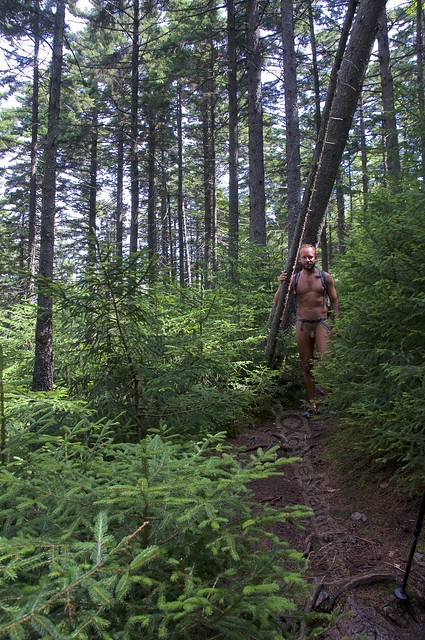
and ferns are common in the undergrowth.

But then we came across something spectacular. You may know of the hikers’ tradition to pile stones into cairns, but here it has been taken to another level!

It looked like a miniature city lost in the woods.

We left our contribution too, but mostly just marveled at the scale of this cairn.

Some of the installations were amazingly balanced at the trees and appeared as if suspended in the air!

When we got to the open space at one of the highest points of the trail, we enjoyed the great views

and some flat rocks that served well for resting.

What else could we ask for? Maybe some berries?

There weren’t any edibles around (at least as fat as we could tell), but we saw some pretty fruits,

including this dark-blue berry.

Then there was another spot with cairns –
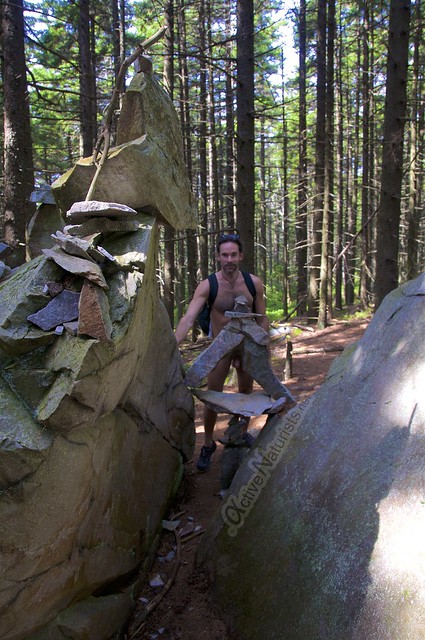
not as massive but perhaps even more impressive in terms of the art of balancing those uneven stones.

Yes, here hikers take cairns seriously!

We didn’t cross many streams,

but about two-thirds of the route we came to a lake –

Little Rock Pond, actually. It was great to refresh and swim in its clear waters. There was a ranger, but again, here we didn’t have to worry that our natural attire would cause any trouble in legal terms. There were a couple more nude swimmers, and the rest didn’t seem appalled by nudity either.
But then, all of a sudden, came a heavy downpour and we had to rush out. It was actually quite a warm rain, and as you might know, the skin is waterproof – so we didn’t feel the need to wear clothes. It was an interesting experience to walk in the forest in such a heavy rain, but it did prevent us from the idea of camping there.
Next day, we explored another trail, which lead to the Stratton Pond (east of the Stratton Mountain).

This trail was mostly flat. About midway, it passed along a mossy swamp,

which provided a nice change of the scenery. However, many of the trees in the swamp were dead, and seemed to have died recently. This swamp was apparently a result of beavers building a damn on the stream there… Oh well, if only they heard about climate change challenge, maybe they’d spare some of those trees…

Soon after that, we approached the lake, and of course we wanted to go for a swim.

We took the trail around the lake (to the left) and found a nice spot for a camp (would be perfect for an overnight stay!),

even with some food supplies,
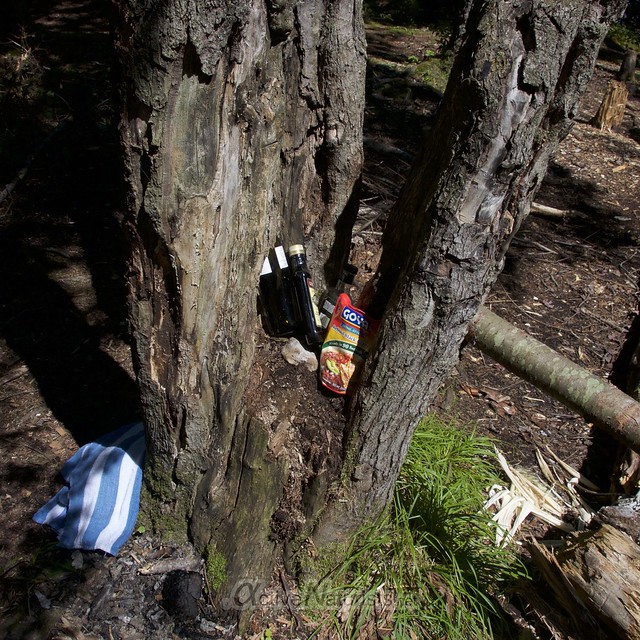
but more importantly – with good access to the water!

We weren’t the only ones enjoying the water though. This pristine lake was a home to many newts

and dragonfly nymphs!

Amazing to see insects the same size of a vertebrate next to each other, and probably if newts lived in the water at juvenile stages, they’d be hunted by dragonfly nymphs. But their life cycles are reversed: the nymphs eventually come out of water and transform into dragonflies, whereas it is the juvenile form of newts, eft, that lives on land.

The bright orange color of eft’s skin warns of its poisonous properties,

so better don’t hold them in your hands however cute they may seem. (But who knows what they transform into on later stages?)
Same probably goes for some brightly colored berries that we saw on this trail, though I’m not sure what they are.

But luckily there were some delicious blueberries too!

By mid-August, blubbery season is usually over in my local Harriman Park, but here in Vermont they seem to ripen later. So it was good to get some extra for the summer.

There was an abundance of mushrooms of all kinds as well,
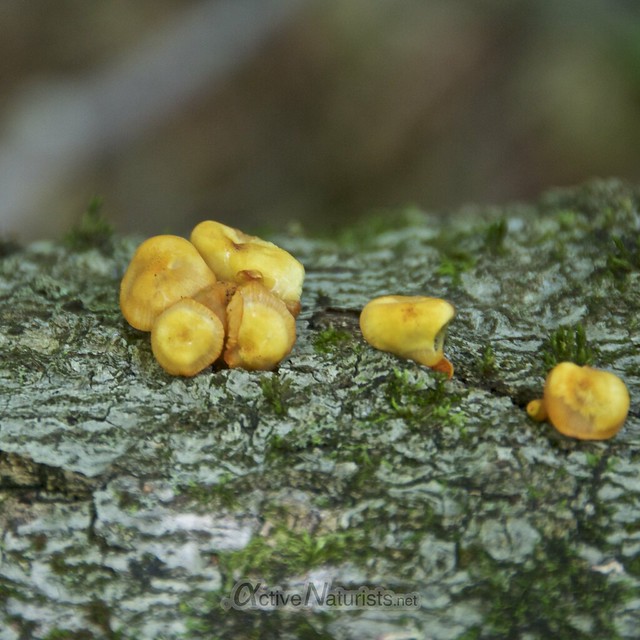
some of them might be poisonous,

others edible.

I use an app from Audubon society to detect mushrooms, and boletes, like this two-colored one

or white suillus, are easy to distinguish.

A few of the local bolete species turn blue when bruised, especially noticeable against the yellow pores.
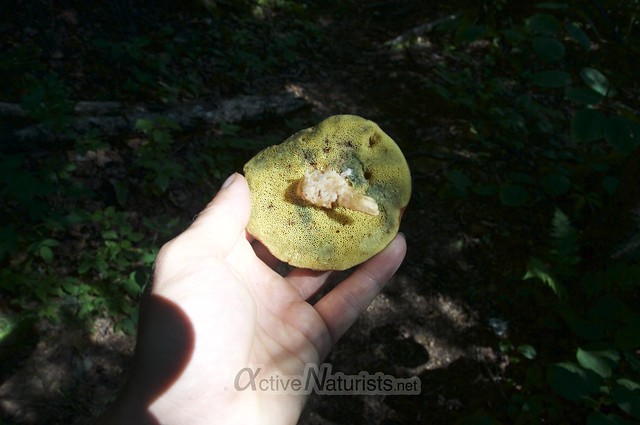
But in this case, the bright color is not a warning sign – just a result of the oxidation of pulvinic acid derivatives, none of which is poisonous. So, on the way back we collected enough mushrooms for a delicious soup!

But even without all these wild gourmet treats, the trails of Vermont are calling us, we’ll surely be back!



